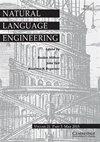Recognition of visual scene elements from a story text in Persian natural language
IF 1.9
3区 计算机科学
Q3 COMPUTER SCIENCE, ARTIFICIAL INTELLIGENCE
引用次数: 0
Abstract
Abstract Text-to-scene conversion systems map natural language text to formal representations required for visual scenes. The difficulty involved in this mapping is one of the most critical challenges for developing these systems. The current study mapped Persian natural language text as the headmost system to a conceptual scene model. This conceptual scene model is an intermediate semantic representation between natural language and the visual scene and contains descriptions of visual elements of the scene. It will be used to produce meaningful animation based on an input story in this ongoing study. The mapping task was modeled as a sequential labeling problem, and a conditional random field (CRF) model was trained and tested for sequential labeling of scene model elements. To the best of the authors’ knowledge, no dataset for this task exists; thus, the required dataset was collected for this task. The lack of required off-the-shelf natural language processing modules and a significant error rate in the available corpora were important challenges to dataset collection. Some features of the dataset were manually annotated. The results were evaluated using standard text classification metrics, and an average accuracy of 85.7% was obtained, which is satisfactory.波斯语自然语言故事文本视觉场景元素的识别
摘要文本到场景转换系统将自然语言文本映射到视觉场景所需的形式表示。绘制地图所涉及的困难是开发这些系统的最关键挑战之一。目前的研究将波斯自然语言文本作为最重要的系统映射到概念场景模型中。该概念场景模型是自然语言和视觉场景之间的中间语义表示,并包含对场景视觉元素的描述。在这项正在进行的研究中,它将用于根据输入的故事制作有意义的动画。映射任务被建模为顺序标记问题,并且条件随机场(CRF)模型被训练和测试用于场景模型元素的顺序标记。据作者所知,不存在用于此任务的数据集;因此,为该任务收集了所需的数据集。缺乏所需的现成自然语言处理模块以及可用语料库中的显著错误率是数据集收集面临的重要挑战。数据集的一些特征是手动注释的。使用标准文本分类度量对结果进行评估,获得了85.7%的平均准确率,这是令人满意的。
本文章由计算机程序翻译,如有差异,请以英文原文为准。
求助全文
约1分钟内获得全文
求助全文
来源期刊

Natural Language Engineering
COMPUTER SCIENCE, ARTIFICIAL INTELLIGENCE-
CiteScore
5.90
自引率
12.00%
发文量
60
审稿时长
>12 weeks
期刊介绍:
Natural Language Engineering meets the needs of professionals and researchers working in all areas of computerised language processing, whether from the perspective of theoretical or descriptive linguistics, lexicology, computer science or engineering. Its aim is to bridge the gap between traditional computational linguistics research and the implementation of practical applications with potential real-world use. As well as publishing research articles on a broad range of topics - from text analysis, machine translation, information retrieval and speech analysis and generation to integrated systems and multi modal interfaces - it also publishes special issues on specific areas and technologies within these topics, an industry watch column and book reviews.
 求助内容:
求助内容: 应助结果提醒方式:
应助结果提醒方式:


